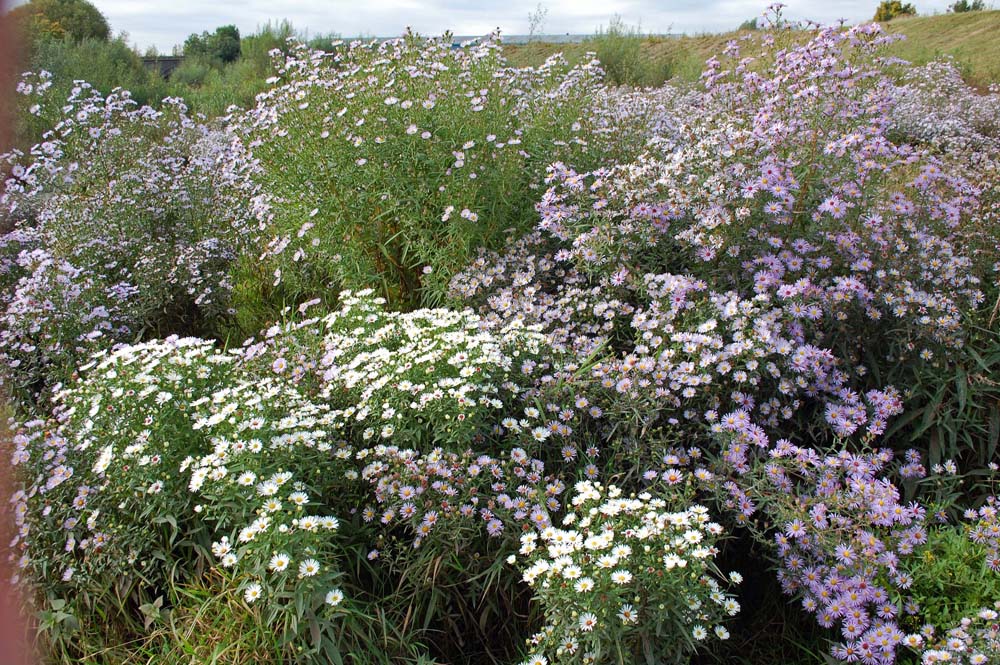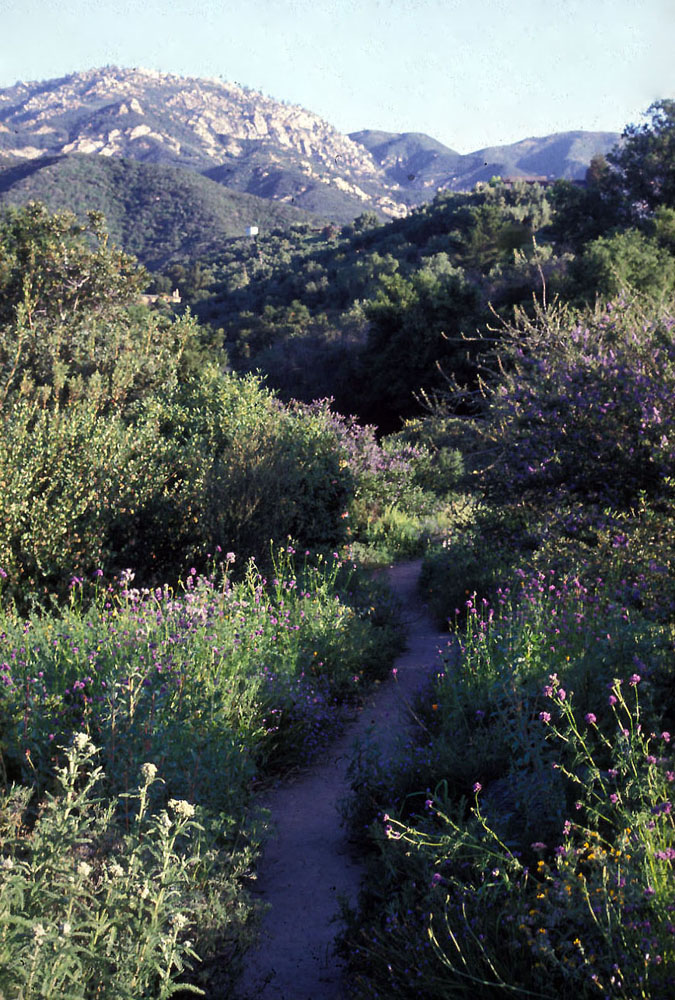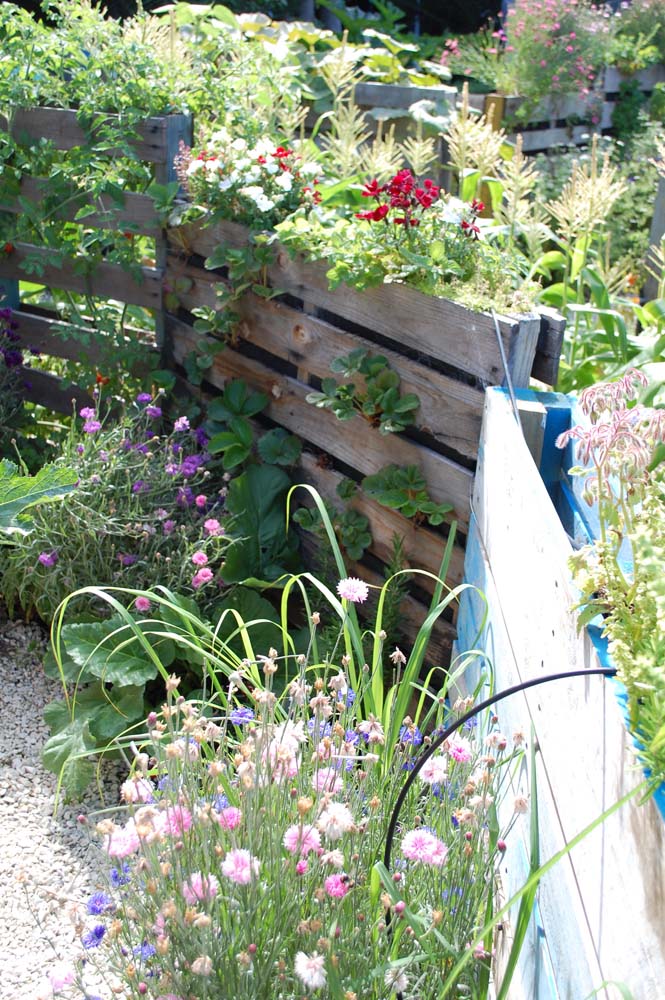Ecological Garden Design – Planning and planting for biodiversity and beauty
This is the fourth article of a series of short pieces for landscapedesign.co.nz in which I look at current trends and ideas in garden design.
Biodiversity and beauty. These vital ingredients of a sustainable human environment are the aim in ecologically designed gardens.
In my ecological design approach I combine an understanding of how plants live together (ecology) with visual impact by using the character of natural ecosystems but placing them in a well organized garden ‘framework’ or ‘structure’. In this way I establish habitat for unusual plants and for insects, birds and other pollinators at the same time as creating beautiful compositions of colour, form and texture. The ecosystems I create can also include productive food plants, many of which are really quite stunning visually if allowed to ‘do their thing’ (have you ever seen a mature parsnip plant in flower? well loved perennial food plants like tamarillo are visually very attractive). They are also good for wildlife (many brassicas attract great numbers of pollinating bees when flowering).
My approach includes some of the concepts and techniques developed in the ecological food growing approach, Permaculture, and also it is important, in my view, to use low impact, non-toxic building materials so that the overall ecological ‘footprint’ of the garden is small.
Why, we should ask, is ecological design in the home garden important? Much of the environment humans have created is akin to an ecological desert. Large scale agriculture strives for monocultures, urban areas (both town centres and residential) are becoming more and more intensively developed with less and less space for nature, and even urban parks (‘green space’) have become, for the sake of simplified maintenance, so simplified in their vegetation structure and variety that they are of little habitat value. And in all these cases there is the continued and liberal use of pesticides and other chemicals which damage the ecosystems by killing insects and plants and subsequently harming creatures further up the food chain, not to mention the damage caused by some of the processes and materials used in their manufacture. It sometimes seems like we, as a culture, just find it hard to live comfortably with nature and natural processes and feel the need to dominate and control them even when it has really very little, if any, real benefit to us.
On the brighter side, the irony is that there is now, in many places, more habitat value to be found in urban wasteland and residential gardens (if they are not too controlled) than in countryside and rural areas.

A spontaneous water meadow of Michaelmas daisies on a wasteland site in Rotherham UK shows the potential of self sown plants to create habitat and beauty.
In the UK a research project over many years showed that private residential gardens can have a greater diversity of plants per square metre and animals than some official nature reserves (see the ‘BUGS’ project, University of Sheffield: BUGS’ project, University of Sheffield ).
So it is clear that we can do a great deal of value in our own small spaces. And the ecological design we can do in gardens and community spaces will go a long way making future cities more liveable and, of course, more sustainable.
This brings us to the question: how do we do ecological design?
Well, in my view, there is nothing new under the sun – all these ideas have been around in some form but I like to list five key characteristics which I think go together to define ecological garden design:
1. Design with plant communities (groups of different plants that live together in a particular place) and ecosystems (the whole system of plants and animals that depend on each other in a type of environment).

The open shrub-land community is the main design feature in this botanical Garden at Santa Barbara, USA. This community would work equally well in a smaller residential space.
2. Design for the environment (rather than changing it to suit your favourite plant or style or fashion or an abstract idea). As a simple example – if a large tree shades an area and it is hard to grow plants under it, don’t cut it down or lop it, create a forest edge community of shade and dry tolerant plants like sedges, ferns, flowering plants and shrubs.
3. Use native and exotic plants, selecting those which grow well in the conditions and with each other (this is the skilled part!), support the ecosystem and create habitat for animals, and beauty for humans. In the case of the shade loving woodland / bush environment mentioned above, these might include, say: natives sedges, ferns, turutu, plus exotics like Streptocarpus, Campanula, Cineraria, Ajuga and Farfugia, all of which I saw growing happily together under a canopy of totara and titoki in a garden near Pukekohe, south of Auckland.

Plants from across the Southern Hemisphere are combined in this meadow planting by James Hitchmough at the London 2012 Olympics Park. Rainbow tussock features with its distinctive orange colour, combining well with Kniphofia amongst others. Like in the image above, this plant assemblage would adapt to the smaller scale of the home garden.
4. Make maximum use of space and surfaces in the garden and take all opportunities to create habitats (e.g. on roofs, walls, in awkward areas where it is very wet or shady or there is no topsoil).

This is a vertical garden created by Natural Habitats Ltd and shows how re-used materials (wooden palettes) can be used to create impressive gardens in very small areas. Something like this could be attached to a wooden fence.
5. When intervening for management and maintenance, be aware of the ecological footprint of the materials and processes used. To put this another way – reduce to a minimum the external input (including fuel, irrigation, fertiliser, pesticides, weed-mat, even woodchip) and reduce to a minimum anything you take off site to the dump or even to be collected by green waste companies (this includes leaf litter, pruning’s, rainfall run-off, weeding refuse). Instead, compost, recycle and re use it all on site – it is really quite possible to deal with pruning’s and even cabbage tree leaves productively on site!

Nick has twenty years’ plus experience of landscape architecture professional practice in New Zealand and Britain. Before setting up his own practice he worked on significant landscape projects across the North of England as a Landscape Architect for Arnold Weddle, for Rotherham Metropolitan Council, and as Design Principal for ECUS, the Environmental Consultancy of the University of Sheffield. This work included a number of award winning landscapes of industry, new roads, campuses, urban regeneration and parks. Nick has worked for over 10 years in New Zealand, gaining broad experience of landscape design in the varied natural and cultural landscapes of the South Pacific.
In addition to professional practice, Nick has taught landscape architecture at universities in the UK (Sheffield and Gloucestershire), USA (Cal Poly) and New Zealand (Lincoln and UNITEC) and has a range of publications to his credit including the Planting Design Handbook (now in its revised second edition) and journal articles. He has recently completed a sabbatical period working and studying at the Department of Landscape, University of Sheffield, UK, with a focus on current thinking on ecological approaches to urban design and innovations in planting design for biodiversity, and working with international experts on urban ecology, green roofs and green walls.


